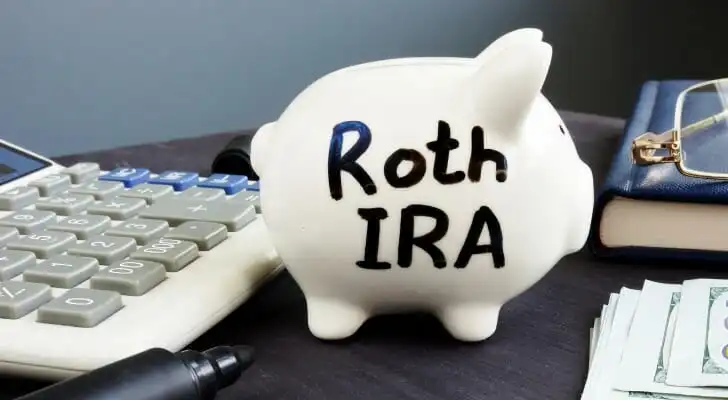There are many ways to save for retirement, but Roth IRAs and 403(b) plans are popular options. A Roth IRA offers tax-free growth and withdrawals in retirement, making it ideal for those who expect to be in a higher tax bracket later in life. On the other hand, 403(b) plans — available to public school employees, nonprofit workers and certain clergy — allow for higher annual contributions and may include employer matching. Deciding between these accounts, or how to use both effectively, depends on your income, employment status and long-term goals. If you’re unsure which option suits you best, a financial advisor can help you create a retirement plan.
What Is a 403(b)?
A 403(b) plan, also known as a tax-sheltered annuity (TSA) plan, is a type of retirement savings account designed for employees of public schools, certain nonprofits and religious institutions. It’s similar in many ways to a 401(k) plan, but tailored to workers in the public and nonprofit sectors.
You may be eligible to participate in a 403(b) plan if you’re employed by a qualifying organization, such as a:
- Public school or school district
- State college or university
- 501(c)(3) nonprofit organization
- Church or other religious group
- Tribal school or school affiliated with tribal governments
- Certain self-employed ministers
Contributions to a 403(b) are made pre-tax, reducing your taxable income in the year of contribution. Your investments grow tax-deferred, and you won’t pay any taxes on earnings until you start making withdrawals, typically after age 59.5. This structure can offer significant long-term tax advantages for retirement savers.
Contribution Limits
For the 2025 tax year, you can contribute up to $23,500 to your 403(b) plan. If you’re age 50 or older, you qualify for a standard catch-up contribution of $7,500, bringing your total contribution limit to $31,000.
Additionally, beginning in 2025, there’s a new “super catch-up” provision for individuals aged 60 to 63. These savers can contribute an extra $11,250, for a total annual contribution limit of $34,750.
Investment Options in a 403(b)
Depending on how your employer structures the plan, your 403(b) contributions may be invested in:
- Annuity contracts from insurance companies
- Custodial accounts holding mutual funds
- Retirement income accounts (available to employees of churches or religious organizations)
These options tend to be more limited compared to IRAs or taxable brokerage accounts, but offer simplified, hands-off investing.
Portability and Rollovers
If you leave your job, your 403(b) doesn’t disappear. You can roll over your balance into another eligible retirement account, such as a:
- Traditional IRA
- Roth IRA (taxes may apply on pre-tax funds)
- 401(k) with your new employer, if permitted
This makes it easier to continue building your retirement savings even as your employment changes.
Pros and Cons of a 403(b) Plan
Pros
- Tax-Deferred Growth: Contributions are made pre-tax, and earnings grow without being taxed until withdrawal.
- High Contribution Limits: Generous annual limits, especially for older savers, allow for accelerated retirement savings.
- Employer Contributions: Some employers offer matching or discretionary contributions, though this depends on the plan’s design.
- Portability: Funds can be rolled over into other retirement accounts if you leave your job.
- Roth Option Available: Some plans offer a Roth 403(b), which allows for after-tax contributions and tax-free withdrawals in retirement.
Cons
- No Early Withdrawal Flexibility: Like other qualified plans, early withdrawals before age 59.5 may be subject to a 10% penalty unless an exception applies.
- Limited Eligibility: Only available to employees of public schools, certain nonprofits and religious organizations.
- Restricted Investment Options: Typically limited to annuities and mutual funds — no access to ETFs, individual stocks or REITs.
- Taxable Withdrawals: Standard withdrawals are taxed as ordinary income, which could impact your retirement tax bracket.
- ERISA Exemptions: Many 403(b) plans are not subject to ERISA regulations, which may result in less oversight and fewer protections compared to 401(k) plans.
What Is a Roth IRA?

A Roth IRA is a type of individual retirement account that allows you to contribute after-tax dollars and enjoy tax-free growth and withdrawals in retirement. Unlike traditional IRAs, Roth IRAs don’t offer a tax deduction for contributions. However, the trade-off is appealing for many investors: qualified withdrawals, both contributions and earnings, are entirely tax-free once you reach age 59.5 and have held the account for at least five years.
Since Roth IRAs are individual accounts, they aren’t tied to your employer and can be opened through most financial institutions, including banks and brokerages. This makes them especially flexible for people who change jobs or want more control over where and how they invest.
One of the most attractive features of Roth IRAs is that they are not subject to required minimum distributions (RMDs) during the account holder’s lifetime. That allows your money to continue growing tax-free for as long as you want, which can be particularly helpful for estate planning or managing retirement income in a tax-efficient way.
Roth IRA Contribution Limits
For 2025, Roth IRA contribution limits are $7,000 for individuals under 50. If you’re 50 or older, you can make an additional $1,000 catch-up contribution, bringing your total to $8,000. However, these contributions are subject to income limits, which can restrict or eliminate your eligibility depending on your modified adjusted gross income (MAGI).
In 2025, single filers earning more than $165,000 and joint filers earning more than $246,000 are ineligible to contribute directly to a Roth IRA. If your income falls in the phase-out range, between $146,000 and $165,000 for singles or $230,000 and $246,000 for joint filers, you may be eligible to make a reduced contribution.
Roth IRA Pros and Cons
Pros:
- Tax-Free Growth and Withdrawals: Qualified withdrawals are not taxed, making this account ideal for savers who expect to be in a higher tax bracket during retirement.
- No RMDs: Roth IRAs do not require minimum distributions, allowing your savings to grow untouched if you don’t need the money right away.
- Flexibility and Portability: Since Roth IRAs are not employer-sponsored, you can take your account with you and maintain it independently of your job.
- Access to Contributions: You can withdraw your original contributions (but not earnings) at any time without taxes or penalties.
Cons:
- Lower Contribution Limits: Compared to employer-sponsored plans like 403(b)s, Roth IRAs have lower annual contribution limits, which may be a drawback for high savers.
- No Upfront Tax Deduction: Contributions are made with after-tax dollars, so you won’t reduce your taxable income in the year you contribute.
- Income Limits: High earners may not be eligible to contribute directly to a Roth IRA, although backdoor Roth strategies may be available.
403(b) vs. Roth IRA: Major Differences
There are many differentiating factors between Roth IRAs and 403(b)s. Perhaps the most significant of these are their respective contribution limits. If you have a choice between these accounts, here are some comparisons to pay attention to:
Below is a table that lays out who is eligible for both types of tax-advantaged accounts and relevant contribution limits for 2025. The row on “Who Can Open One” for the Roth IRA refers to modified adjusted gross income.
403(b) vs. Roth IRA
| Details | 403(b) Account | Roth IRA |
| Contribution limit for 2025 | $23,500 | $7,000 |
| Catch-up contribution limit for 2025 | Those 50 or older: $7,500 Those 60-63: $11,250 | $1,000 |
| Who can open one? | A public sector or nonprofit employee, like a teacher or minister | Single filers making less than $165,000 and married couples filing jointly making less than $246,000 |
| Can your employer contribute? | Yes | No |
| Is there an RMD? | Yes, at 73 years of age | No (while the owner is alive) |
| Can you keep it forever? | As long as your employer offers it and you stay with that job | Yes, regardless of employer or job status |
Roth IRA vs. 403(b): How to Choose
If you’re eligible to contribute to both a Roth IRA and a 403(b), you’re in a strong position to build retirement wealth. In fact, you can contribute to both accounts at the same time, and for many investors, that’s the ideal approach. But if your resources are limited and you have to choose one over the other, your decision should be based on a few key factors: employer matching, taxes, investment options and account flexibility.
Start With Employer Matching
One of the biggest advantages of a 403(b) is the potential for employer contributions. Similar to 401(k) plans, some employers offer matching funds for your 403(b) contributions. This is essentially free money. So if your employer offers a match, it’s a good idea to prioritize contributing enough to your 403(b) to receive the full match before considering other accounts. Skipping this benefit is like leaving part of your salary on the table.
Think About Taxes: Now or Later?
Next, consider your current and expected future tax rate. This will help you decide between the Roth and traditional (pre-tax) options.
- If you expect to be in a higher tax bracket in retirement, a Roth IRA (or Roth 403(b)) may be the better choice. You’ll pay taxes now on your contributions, but all future withdrawals, including earnings, can be tax-free.
- If you expect your tax rate to be lower in retirement, a traditional 403(b) might make more sense. Your contributions reduce your taxable income today, and you’ll pay taxes when you withdraw the money later, ideally at a lower rate.
Younger investors often benefit from Roth contributions because they’re typically in a lower tax bracket and have more time for tax-free growth.
Evaluate Investment Options
A major difference between the two accounts lies in investment flexibility.
- A 403(b) plan typically offers a limited selection of investments, often made up of mutual funds, annuities or target-date funds. The plan’s choices and fees are determined by the employer and plan provider.
- A Roth IRA opened through a brokerage account offers far more investment freedom, including access to individual stocks, ETFs, index funds and bonds. If you want to build a customized portfolio or prefer lower-cost options, a Roth IRA may provide more control.
Consider Account Type Flexibility
It’s also worth noting that both account types offer Roth and traditional variants:
- If you want the simplicity and higher contribution limits of a 403(b) but prefer tax-free withdrawals in retirement, a Roth 403(b) is an option worth exploring.
- Alternatively, if you want broader investment options but still want a tax deduction today, a traditional IRA might be a better fit than a Roth IRA.
There’s no one-size-fits-all answer when comparing a Roth IRA and a 403(b). Your income level, tax strategy, employer benefits and investment preferences all play a role in making the right decision. In many cases, using both accounts together can maximize your retirement readiness.
Above all, the most important step is to start saving and investing, regardless of the account type. If you’re unsure which plan aligns best with your financial goals, a financial advisor can help you design a tailored retirement strategy. The sooner you begin, the better positioned you’ll be for a financially secure future.
Bottom Line

The perceived choice of which retirement account you should use is really a fallacy. No IRS rules are holding you back from taking advantage of multiple account types. That means you can have both an after-tax Roth IRA and a pre-tax 401(k) at the same time. Diversifying your assets between these various tax advantages can have major benefits when you retire.
Tips to Help You Get Ready for Retirement
- If you’re unsure which plan is right for you, or you need help picking investments, you may want to work with a financial advisor. Finding a financial advisor doesn’t have to be hard. SmartAsset’s free tool matches you with up to three vetted financial advisors who serve your area, and you can have a free introductory call with your advisor matches to decide which one you feel is right for you. If you’re ready to find an advisor who can help you achieve your financial goals, get started now.
- No matter which plan you choose, do your best to max out your contributions. The more money you save now, the more your future self will have when retirement comes around. When you’re young and earning a lower salary, it may be tough to max out your contributions. However, this head-start can make a huge difference.
- Don’t forget to add in Social Security payments when you calculate what your retirement income will look like. To get an idea of what you can expect to receive, stop by SmartAsset’s Social Security calculator.
Photo credit: ©iStock.com/shapecharge, ©iStock.com/designer491, ©iStock.com/oneinchpunch
